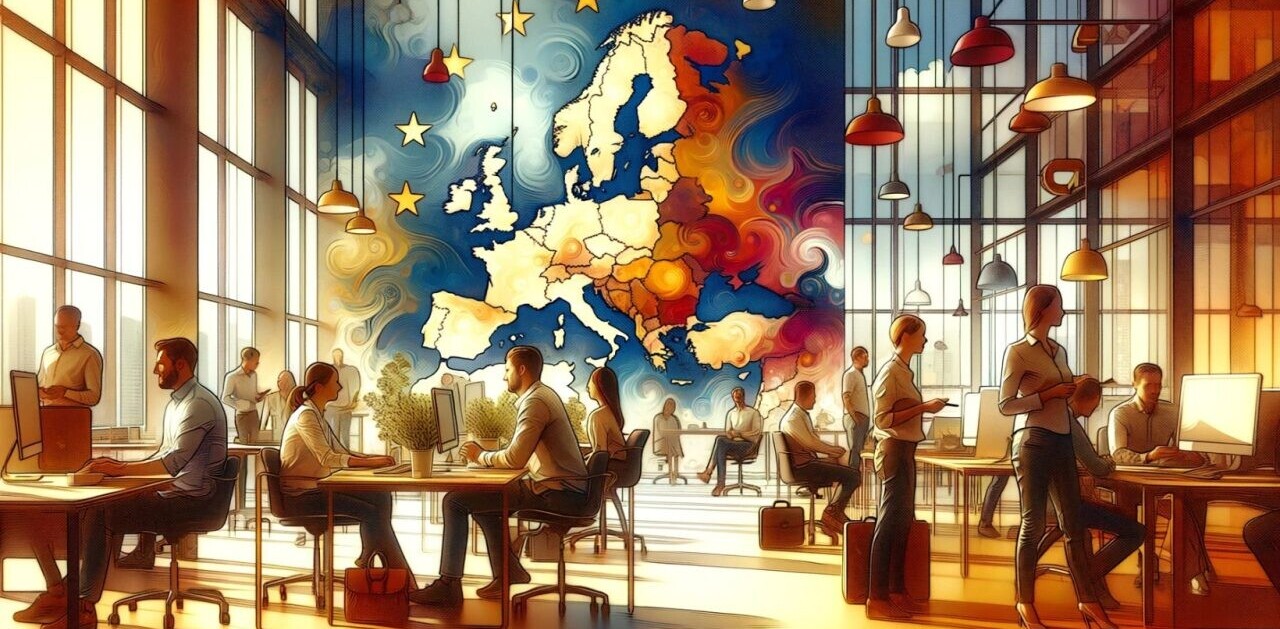
The past two years have provided some extreme dynamics for technology and innovation. Business and industries were shaken up and some were forced to adapt to digitization faster than planned.
2021 was the year to refine goals and adapt to a new reality. However, 2022 has the potential to become a year of even bigger changes.
When experts discuss fast-growing trends in technology, eCommerce is one of the leading examples. No surprise there, we’re talking about an industry with a tremendous growth history. Not to mention its ability to adapt to challenges (and world-wide pandemics) is faster than the wind.
But, instead of rushing to adapt to new technology, some industries are considered late adopters — or so called “laggards” in the technology adoption cycle. These are industries with long histories and a workforce which is often less tech savvy than in emerging industries. While many had been able to resist digital transformation in an ever evolving digital world, the pandemic made it necessary to kick tech adoption into high gear.
There’s now high demand for user-friendly tools that can help less tech savvy users adopt change quickly. But how do you go about designing tech tools for these industries? Can we use the same processes?
We interviewed two entrepreneurs from the latest batch of Techleap.nl’s Rise Program, FeedbackFruits and RoomRaccoon, who are set to shake up the (slightly more traditional and less tech savvy) education and hotel industries with innovative ideas and approaches.
From helping teachers design digital learning experiences to giving small-scale hoteliers a tech boost, here are five things you should know about designing tech tools for late stage adopters.
Speak their language
Education and students were hit hard through the different COVID-19 waves and variants, leading to a rapid and often not fully prepared switch to online education. A McKinsey report expanded on the effect that “unfinished learning” can have on students. It also notes how technology could provide the boost the education system needs to bridge the gap.
FeedbackFruits is on a mission to transform the education system through EdTech. Founder and CEO, Ewoud de Kok, designed tools that are easy to use, and understandable for both teachers and students. For him, having an open mindset to EdTech and new methods, can move the adoption cycle faster.
But how can you help your users develop an open mindset to new tech?
First, as Ewoud explained, you need to make it as close to the user’s current reality as possible.
During FeedbackFruits’ 1.0 version of the product, pedagogy and online education still had a long way to go in technological adoption. Ewoud and his team spent a lot of time and energy to properly understand their users and make adjustments to create a more seamless solution.
An insider-tip he shared was to focus on terminology.
You should invest time into explaining your product using their vocabulary. When it comes to educational institutions, we learned it was best to use terms like “learning objective,” “activity,” or “method,” which are commonly used by educators.
When you design a tool for late stage adopters, simply taking the time to learn how to speak your users’ “language” will make user education and adoption much easier and faster.
What if you’re already on your 2.0 version? Well, take that extra mile to get even closer to your users and design an even better 3.0 version. Optimization is an always-on approach.
Have an outstanding customer service experience
This is strongly connected to the previous point. It seems simple, yet it has a domino effect.
When you keep polishing and tweaking your product, users will have different interaction points with it. Some can adapt to it fast, some can get confused. And when confusion and frustration sets in, this is often the point when less tech savvy users will give up and go back to the old way of doing things.
Remember that your overall user experience is connected to how your users receive help when they feel stuck or have an issue with the experience. Hiring a team of patient, easy to understand customer support professionals (who, again, know how to speak your users’ language) will give late adopters a stronger sense of security when diving into the world of tech. Ewoud explained:
Our support team saved us several times! When you guide your user properly and help with their problems, you create a supporter and a follower.
Motivate the hell out of your users
The hotel industry’s adoption of technology has certainly quickened during the COVID-19 pandemic. This means several businesses had to improve their approach, and rethink their strategy to get the most out of their internal systems, while keeping their guests happy. The demand for new technology in the industry is exceptional. In the past two years, RoomRaccoon grew its team by 210%.
There are so many tech tools being created everyday, but the trick to getting users to choose yours over others is to, not just solve your users problems, but to go beyond by showing them new opportunities and possibilities they may not have thought of before.
Co-founder Tymen van Dyl explained that hoteliers in general are not the most tech-savvy people, and they’re aware of it. Thus, one of the key factors for designing your tool is user experience and motivation.
RoomRaccoon is a platform that helps hotels automatically optimize their rates according to room-sell-probability in real-time. Beyond this, it also offers a solution to automatically upsell room upgrades and extras to guests.
Van Dyl’s team provided an incredible amount of content to help educate users about their tool and new traveltech trends. Their aim is to activate their users, while keeping human interaction alive.
Hoteliers don’t click around that often, so we are putting extra energy into explaining and motivating them to try out new things on our interface. We provide a lot of extra customer and user communication by providing additional content, webinars, and live training.
Localization plays a huge role in this. When you’re active in multiple markets, providing localized content and interface help for your users around the world speeds up the process of trust-building and adaptation.
Be agile and flexible
Always be looking for new opportunities to develop your product and be ready to adapt to new customer pain points.
During the pandemic, the hotel industry faced major changes in dynamics. With travel agencies like Booking.com giving bookers preference when making cancellations, many hoteliers realized just how dependent they were on such agencies.
Challenges like this can be seen as opportunities to re-prioritize. When direct booking became more popular, and the dependency on travel agencies changed, RoomRaccoon’s team introduced Google Hotels integrations, which boomed during the pandemic.
Additionally, gamification became a new trend in customer experience and employee engagement. On the hotel-side, customer support started using gamification to keep employees engaged and motivated by helping them “level up” and gather points for rewards based on their achievements. Meanwhile, gamification provided new ways to engage customers via loyalty programs and reward-systems, giving fast moving brands a competitive edge.
As Van Dyl explained:
You can’t look too much ahead into the future, so be agile and flexible enough based on the market. Keep on communicating with your teams, set your priorities and respond to new events in the industry.
Tech adoption is about enrichment, not replacement
Finally, it’s important to address one of the biggest fears that often hinders tech adoption: the fear of being replaced. During the pandemic, social distancing protocols forced many industries to replace human contact with technology. In the hospitality industry, this meant contactless check-ins.
But, as van Dyl explained, once restrictions were lifted, many hoteliers found that travelers actually wanted to be welcomed by someone at reception — even if they were still using a contactless check-in system. There will always be a need for human interaction. First and foremost, as van Dyl explained, technology should be considered as “enrichment, instead of replacement.”
There you have it, with these five insider tips it’s time to go forth and build your products. All you have to do is listen to the voice of your users, provide outstanding customer experience, motivate like you are reaching for the stars, and be flexible. Keep an eye on what’s happening in the industry and transform it into an opportunity. Finally, don’t forget the human factor. It’s important to stress to your customers, especially late adopters, that technology won’t replace people, it should only enhance your offering.
Get the TNW newsletter
Get the most important tech news in your inbox each week.






